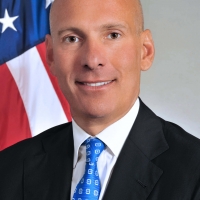Oct052015
Posted at 5:51 PM
Post by Stefan M. Selig Under Secretary for International Trade
With the negotiations for the Trans-Pacific Partnership (TPP) completed, today is an important day for American businesses and workers. I would like to commend our negotiators, the Department of Commerce and International Trade Administration professionals who assisted in the negotiations, and all other involved parties for their tireless efforts to find consensus on this historic agreement.
TPP is an historic agreement precisely because of the opportunity it represents for U.S. exporters. By reducing or eliminating tariffs as well as non-tariff barriers, TPP will give our businesses improved access to 11 Pacific Rim markets collectively representing 40% of global GDP. Additionally, the majority of middle class consumers over the next 15 years (3.2 billion people according to the OECD) will reside in the Asia-Pacific region, which is also estimated to generate nearly half of global economic growth over the next 20 years.
TPP will also remove market ambiguities, producing the transparency and predictability that facilitates global commerce. The agreement will commit partner nations to stronger intellectual property protections as well as clear rulemaking to prevent the rise of burdensome regulations. At the same time, TPP will protect the right of all partner nations to regulate their markets while ensuring that U.S. investors enjoy the same rights and protections as their competitors.
But trade agreements alone do not create business realities. And a historic agreement like TPP requires a first-class infrastructure that maximizes its potential. That infrastructure exists in the Department of Commerce generally, and more specifically in the services and programs provided by the 2,200 trade and investment experts of ITA; all of whom are committed to maximizing the benefits of TPP for American businesses and workers.
Our infrastructure begins with our Commercial Service. We already have a strong presence in all 11 TPP partner markets with 170 Foreign Commercial Service officers and staff in U.S. embassies and consulates. Our on-the-ground presence will connect U.S. businesses to TPP partner markets and help secure important connections with distributors, manufacturers, and other potential partners. That international infrastructure is complemented by our Commercial Service staff in more than 100 cities in the U.S., who will assist exporters throughout the country.
ITA is also committed to increasing opportunities to connect U.S. companies directly with potential business partners. Through our International Buyer Program, we will stand up domestic trade shows to create matchmaking opportunities with recruited delegations of qualified buyers and sales representatives from TPP countries. We will also work in coordination with administration officials to arrange and participate in trade missions focused on specific industry sectors. And through our Advocacy Center, we will work with senior administration officials to assist U.S. firms in winning government contracts.
But optimizing trade agreements also means enforcing them when necessary. That is why U.S. businesses can rely on the protection of our Enforcement and Compliance experts, who will monitor, investigate, and ensure TPP compliance among all of our partner markets.
With demand and growth exploding in the Pacific Rim, TPP is vital to ensuring that U.S. companies compete and win in the global marketplace. Both ITA and I stand ready to make sure that all businesses fully benefit from the historic opportunity this agreement provides.




